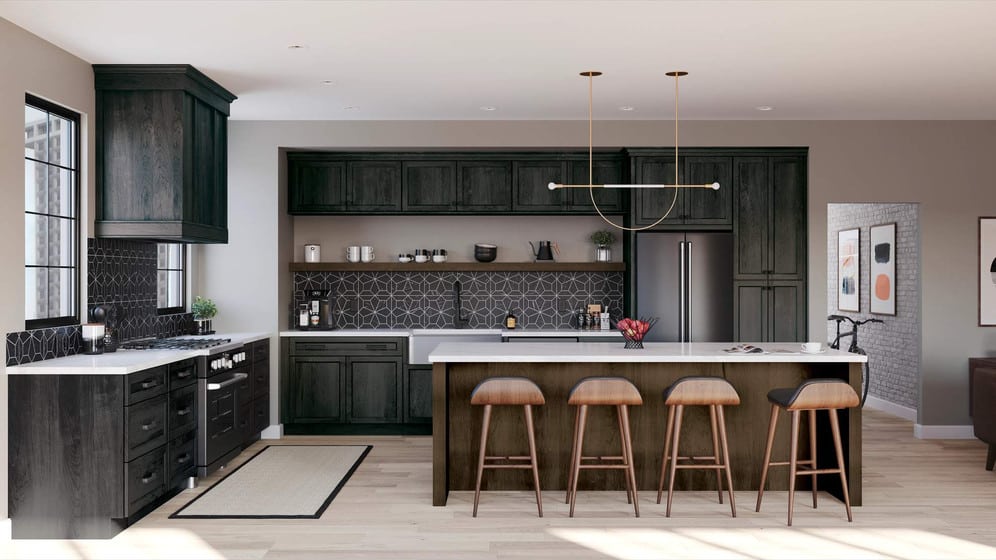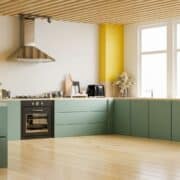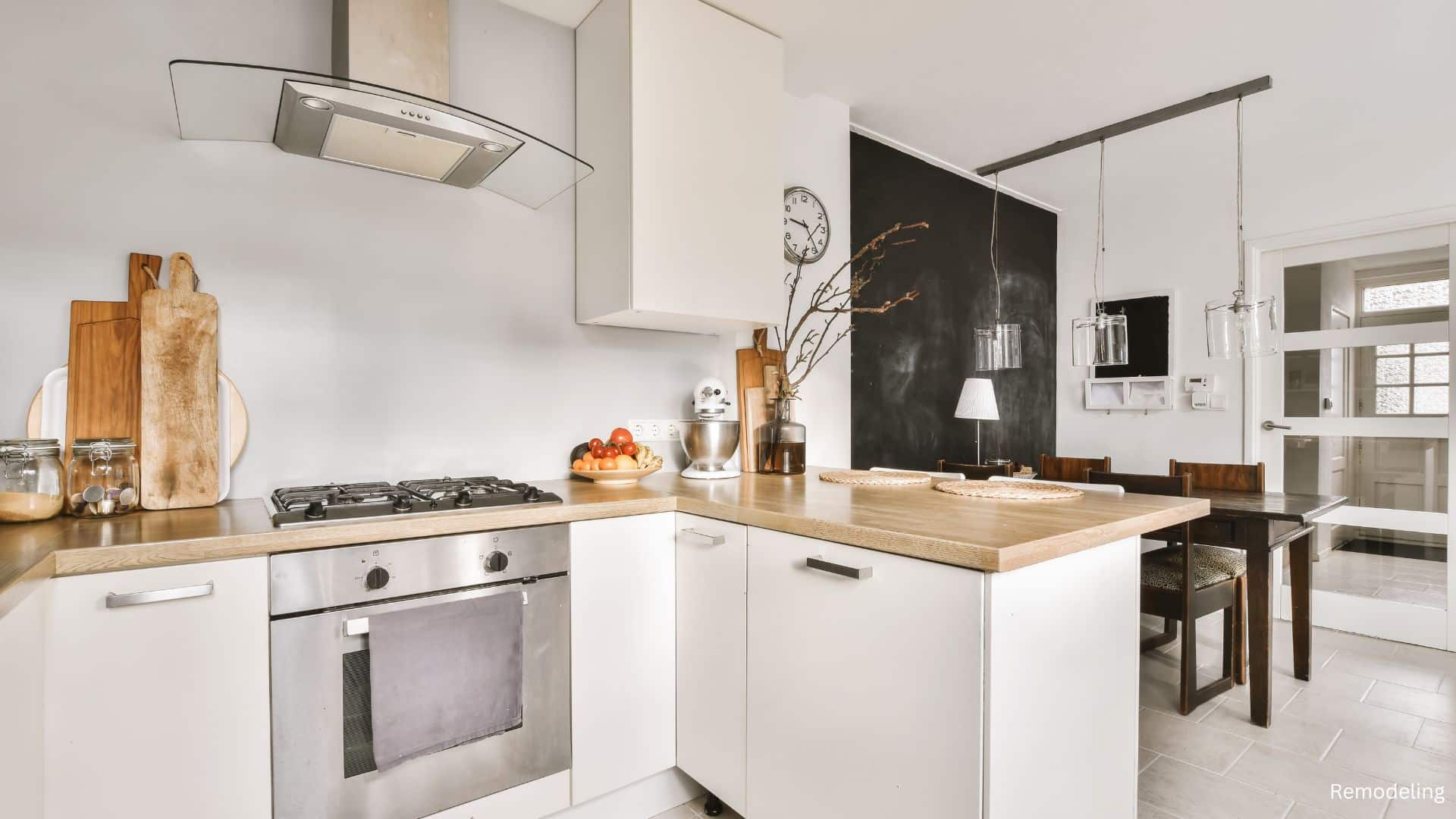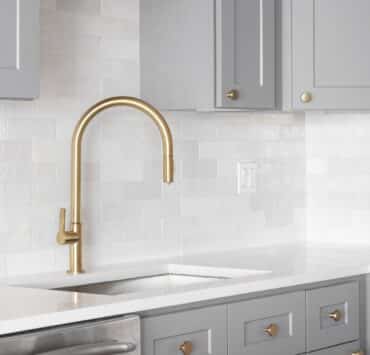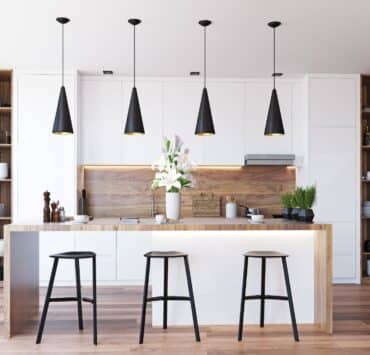The average cost of a kitchen remodel in 2025 is estimated to be around $27,800, reflecting current data and accounting for inflation and market trends. In 2024, kitchen remodeling costs in the United States typically range from $15,000 to $50,000, with an average of approximately $27,000. Assuming an annual inflation rate of about 3%, this projected increase of $800 highlights how rising material and labor costs impact budgets. Actual expenses, however, will depend on factors such as project scope, material selection, and regional labor rates.
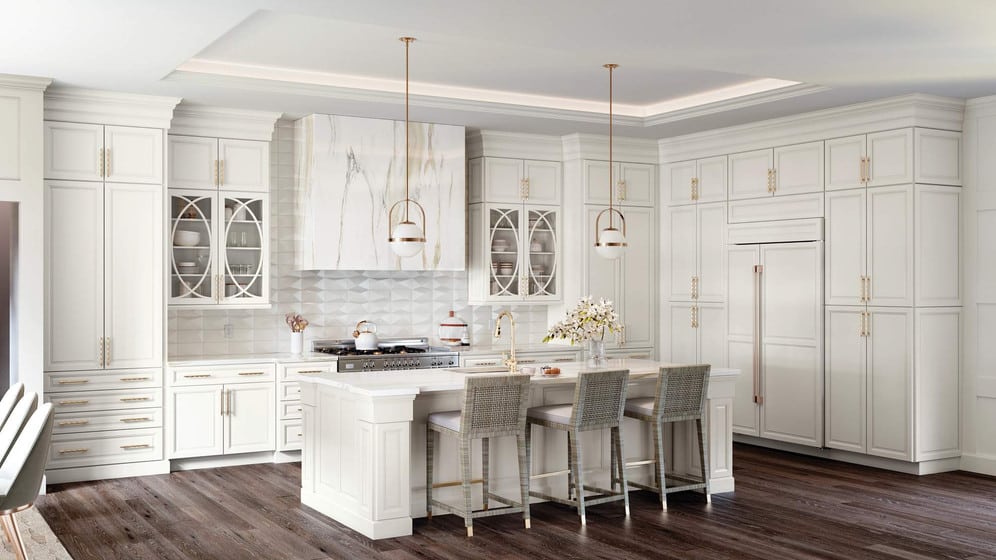
Kitchen Remodeling Cost Breakdown (2025 Estimates)
| Kitchen Element | Cost Per Square Foot (Low) | Cost Per Square Foot (High) |
|---|---|---|
| Cabinetry (Refacing) | $16 | $50 |
| Countertops (Granite) | $55 | $210 |
| Countertops (Quartz) | $75 | $160 |
| Flooring (Vinyl) | $3.50 | $12 |
| Flooring (Hardwood) | $15 | $35 |
| Backsplash | $12 | $55 |
| Lighting (Basic) | $85 | $375 |
| Lighting (High-End) | $110 | $450 |
| Drywall Replacement | $2.50 | $7 |
| Painting (Walls and Ceiling) | $1.20 | $3.50 |
| Plumbing | $50 | $160 |
Top Kitchen Remodeling Cost Factors
Cabinets and Countertops:
Cabinets remain one of the most significant expenses in a kitchen remodel. For 2025, refacing cabinets costs between $1,700 and $5,200, while custom-built cabinets can exceed $12,500, depending on materials, finishes, and complexity. Countertop choices like granite, quartz, and marble also impact costs significantly, with materials priced between $55 and $320 per square foot.
Appliances:
Modern, high-tech, and energy-efficient appliances are becoming the norm, but they add to the overall cost. In 2025, new kitchen appliances, including a refrigerator, range, dishwasher, and microwave, range from $6,000 to $22,000, depending on the brand, features, and smart technology integration.
Labor and Installation:
Labor continues to account for 40% to 50% of the total remodeling cost. This includes fees for professionals such as plumbers, electricians, and contractors. Larger-scale projects, particularly those involving layout modifications or structural changes, will significantly raise these costs. Expect labor rates in 2025 to be 5-10% higher than in prior years due to increasing demand and inflation.
Additional Elements:
Smaller elements, such as lighting, backsplash, and flooring, contribute notably to the total cost. In 2025, lighting updates range from $1,800 to $4,500, depending on the type and design. Backsplash installation typically costs between $600 and $1,900, while flooring expenses vary greatly depending on the material, with vinyl being more affordable and hardwood or tile adding a premium.

Setting a Budget
Here are some budgeting tips for setting a kitchen remodel budget:
Spend 5-15% of your home’s value
To maximize return on investment in 2025, allocate 5-15% of your home’s value to a kitchen remodel. For a home valued at $300,000, this translates to a budget of $16,500 to $49,500, accounting for inflation and rising costs in materials, labor, and appliances. Adjust accordingly for homes with higher or lower values, keeping in mind the increased emphasis on energy efficiency and high-quality finishes in modern kitchens.
Prioritize key elements:
Focus on high-impact features like cabinetry, countertops, and flooring, as these often bring the most value and aesthetic improvement.
Set aside a contingency fund:
Allocate 10-20% of your total budget for unexpected expenses that may arise during the project, such as structural repairs or design changes.
Obtain multiple quotes:
To ensure competitive pricing, get estimates from several contractors before finalizing your budget.
DIY smaller tasks:
If possible, take on small DIY projects like painting or installing a backsplash to save on labor costs.
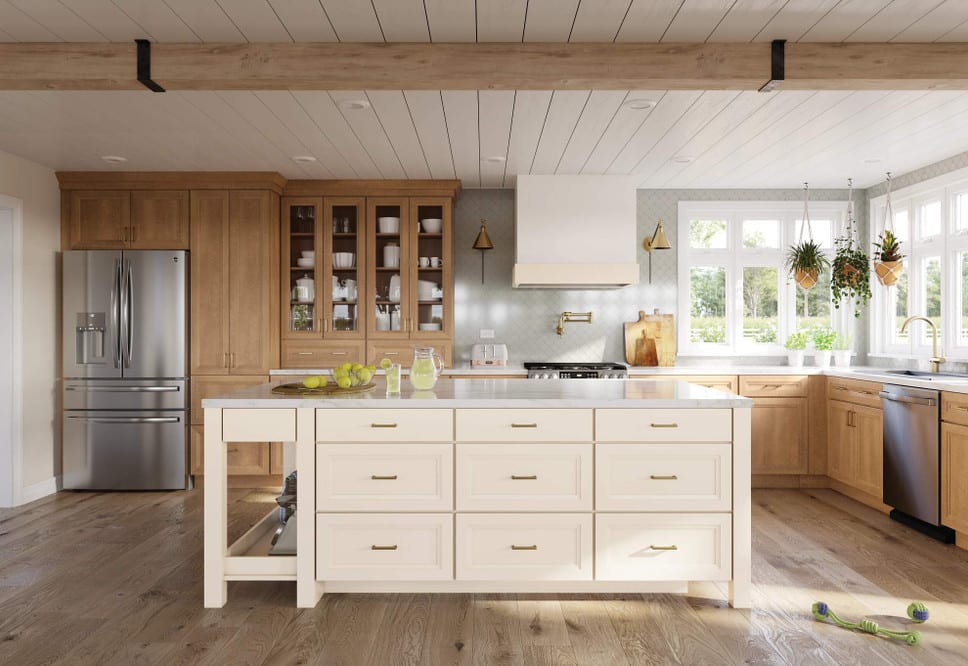
Hidden Costs of Kitchen Remodeling
A kitchen remodel can be an exciting project, but it’s important to prepare for unexpected expenses that may arise along the way. Beyond the initial estimates for cabinets, countertops, and appliances, there are often hidden costs that can catch homeowners off guard. Recognizing these potential expenses upfront can help you manage your budget effectively and avoid surprises.
Permit Fees
Many kitchen remodels require permits for electrical, plumbing, or structural changes. Permit fees vary by location but can range from $100 to $1,500 or more, depending on the scope of work. Neglecting permits can result in fines or complications when selling your home.
Waste Disposal
Demolition generates significant waste, including old cabinetry, appliances, and construction debris. Dumpster rentals, hauling services, or disposal fees at local facilities can add several hundred dollars to your costs.
Structural Repairs
During demolition, contractors may uncover issues like water damage, mold, outdated wiring, or deteriorated subflooring. Addressing these problems can be costly but is necessary to ensure a safe and functional kitchen.
Material Overages
Miscalculations or mistakes in ordering materials like tiles, flooring, or backsplash can result in needing more supplies than anticipated. This is especially common with custom or specialty materials that may require rush orders.
Temporary Living Arrangements
For extensive remodels, you may need to eat out more frequently or temporarily relocate if your kitchen becomes unusable. These costs can add up quickly.
Unexpected Design Changes
Mid-project changes to the design or materials, often referred to as “scope creep,” can increase both material and labor costs.
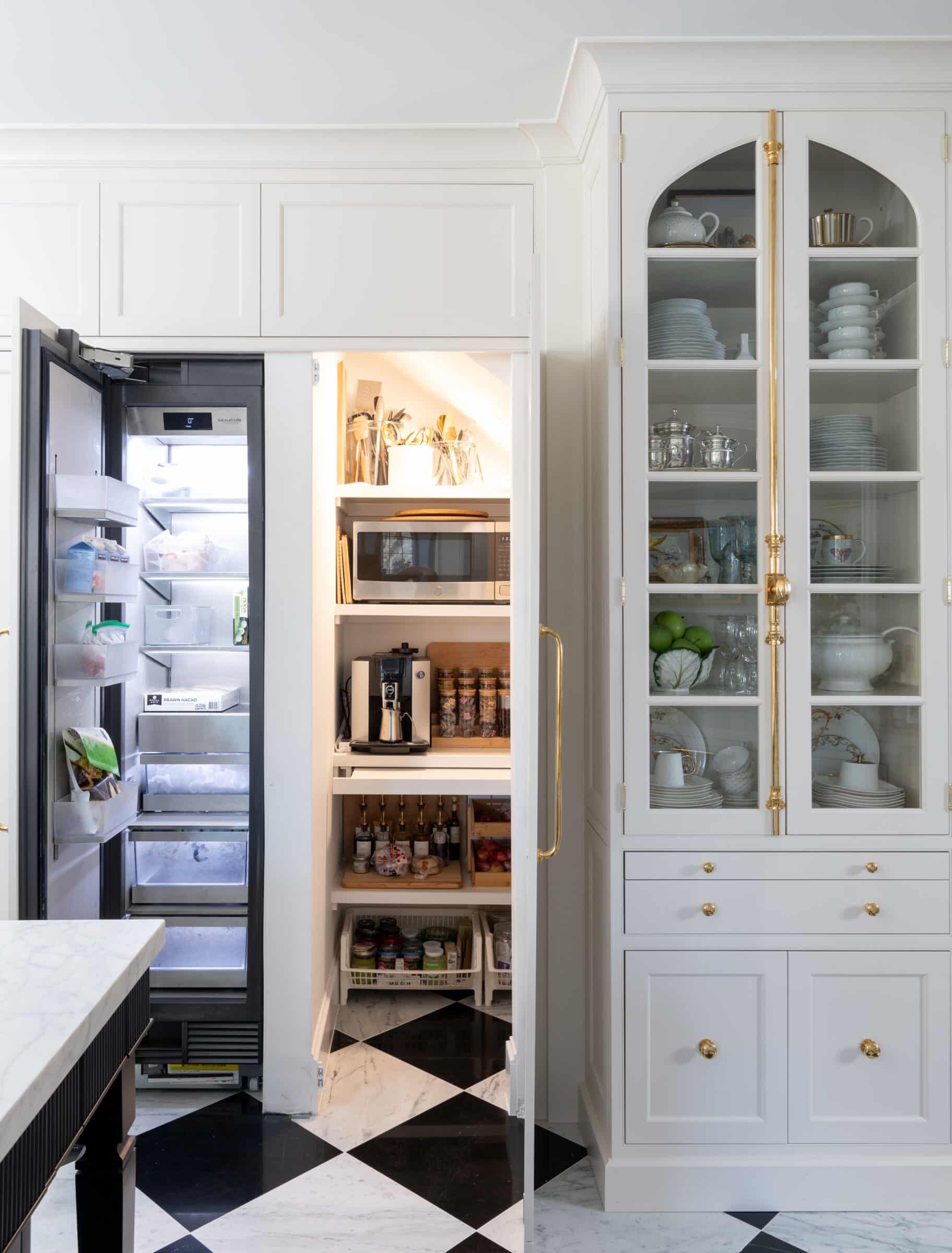
Return on Investment (ROI) for Kitchen Remodels
If you’re planning to sell your home, it’s smart to think about the return on investment, or ROI, for any kitchen upgrades. Kitchen remodels are a great way to boost your home’s value, but how much you get back depends a lot on how big of a remodel you do.
Minor Kitchen Remodels:
Pros:
- Higher ROI: Minor remodels typically recoup about 70-80% of their costs upon resale.
- Cost-Effective: Focusing on surface updates like painting, refacing cabinets, and installing new backsplashes keeps expenses lower.
- Quicker Completion: Less extensive work means shorter project timelines, reducing inconvenience.
Cons:
- Limited Transformation: Minor updates may not address underlying structural or layout issues.
- Potential for Overlap: If the existing kitchen is significantly outdated, minor changes might not meet market expectations.
Luxury Kitchen Remodels:
Pros:
- Enhanced Aesthetics and Functionality: High-end materials and appliances can significantly improve the kitchen’s appeal and usability.
- Increased Buyer Attraction: In upscale markets, luxury kitchens can be a strong selling point.
Cons:
- Lower ROI: Luxury remodels often recoup about 50-60% of their costs.
- Higher Costs: Premium materials and custom features substantially increase the budget.
- Longer Project Duration: Extensive renovations require more time, leading to prolonged disruption.
Comparison of Upgrades and Their ROI:
- Cabinetry: Refacing existing cabinets offers a higher ROI compared to installing custom cabinets.
- Countertops: Upgrading to mid-range materials like quartz or granite provides better returns than opting for luxury materials such as marble.
- Appliances: Investing in energy-efficient, mid-range appliances yields a higher ROI than purchasing top-of-the-line models.
Key Areas to Focus On
To get the most value, stick to updating key areas like cabinets, countertops, and energy-efficient appliances. Also, it’s wise to keep your remodel in line with the style and price of your home. For instance, adding a high-end chef’s kitchen in a mid-priced home might not bring as much return as it would in a luxury home.
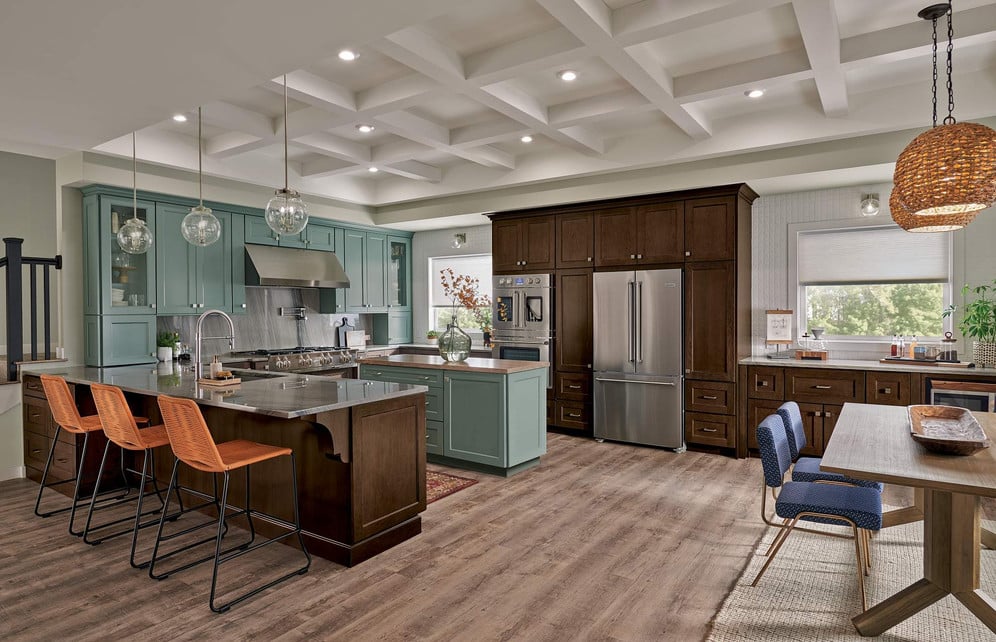
How to Save on Kitchen Remodeling Cost
Remodeling a kitchen can be expensive, but there are several ways to reduce the overall kitchen remodeling cost without sacrificing quality or style. Here are some practical tips to help you save:
1. Refacing Instead of Replacing Cabinets
Rather than completely replacing your cabinets, consider refacing them. This involves updating the cabinet doors and drawer fronts while keeping the existing framework. Refacing costs significantly less than installing new custom cabinets and can give your kitchen a fresh look at a fraction of the price.
2. Choose Cost-Effective Materials
High-end materials like marble or custom wood can quickly inflate your kitchen remodeling cost. Instead, consider more affordable alternatives such as laminate countertops, ceramic tile backsplashes, or vinyl flooring. These materials can mimic the look of more expensive options while keeping costs down.
3. Keep the Existing Layout
One of the largest expenses in a kitchen remodel is moving plumbing, gas lines, and electrical systems. To save on costs, keep your existing kitchen layout. By avoiding major structural changes, you’ll minimize labor costs and project time.
4. DIY Where Possible
If you’re handy, consider taking on some of the smaller tasks yourself. Painting walls, installing hardware, or even tiling the backsplash can be done as DIY projects. However, leave complex work like electrical or plumbing to professionals to avoid costly mistakes that could raise your kitchen remodeling cost in the long run.
5. Shop Smart for Appliances
Appliances can significantly add to the overall kitchen remodeling cost. To save money, shop for appliances during holiday sales, look for energy-efficient models that offer rebates, or consider purchasing gently used or refurbished appliances. Bundling appliance purchases can also lead to discounts from retailers.
6. Reuse or Upcycle Materials
If some elements of your kitchen are still in good condition, consider reusing them. For example, if your countertops are durable but outdated, you can refinish them instead of replacing them. Upcycling or repurposing existing materials can significantly reduce your overall remodeling cost.
Common Questions
1. What is the average kitchen remodel cost in 2024?
The average kitchen remodel cost in 2024 ranges between $20,000 to $60,000. Minor remodels that focus on updates like painting, refacing cabinets, and installing new countertops can cost between $10,000 to $25,000, while high-end luxury remodels can exceed $70,000.
2. What factors influence kitchen remodel cost the most?
Several factors impact the overall kitchen remodel cost, including the size of the kitchen, the quality of materials (e.g., custom cabinetry or high-end appliances), labor costs, and the complexity of the project. Altering the kitchen layout or moving plumbing and electrical systems will also increase costs.
3. How much should I budget for a kitchen remodel?
Experts recommend budgeting 5-15% of your home’s value for a kitchen remodel to ensure a good return on investment. For a home valued at $300,000, this translates to a budget of $16,500 to $49,500, accounting for inflation and rising costs in materials, labor, and appliances.
4. What is the most expensive part of a kitchen remodel?
Typically, cabinetry and countertops make up the most expensive part of a kitchen remodel cost. Custom cabinets can exceed $10,000, while countertops, especially those made of materials like granite or marble, can cost $50 to $300 per square foot.
5. Can I reduce the kitchen remodel cost by doing some tasks myself?
Yes, taking on small DIY projects such as painting or installing a backsplash can help reduce the overall kitchen remodel cost. However, for complex tasks like plumbing or electrical work, it’s best to hire professionals to avoid costly mistakes.
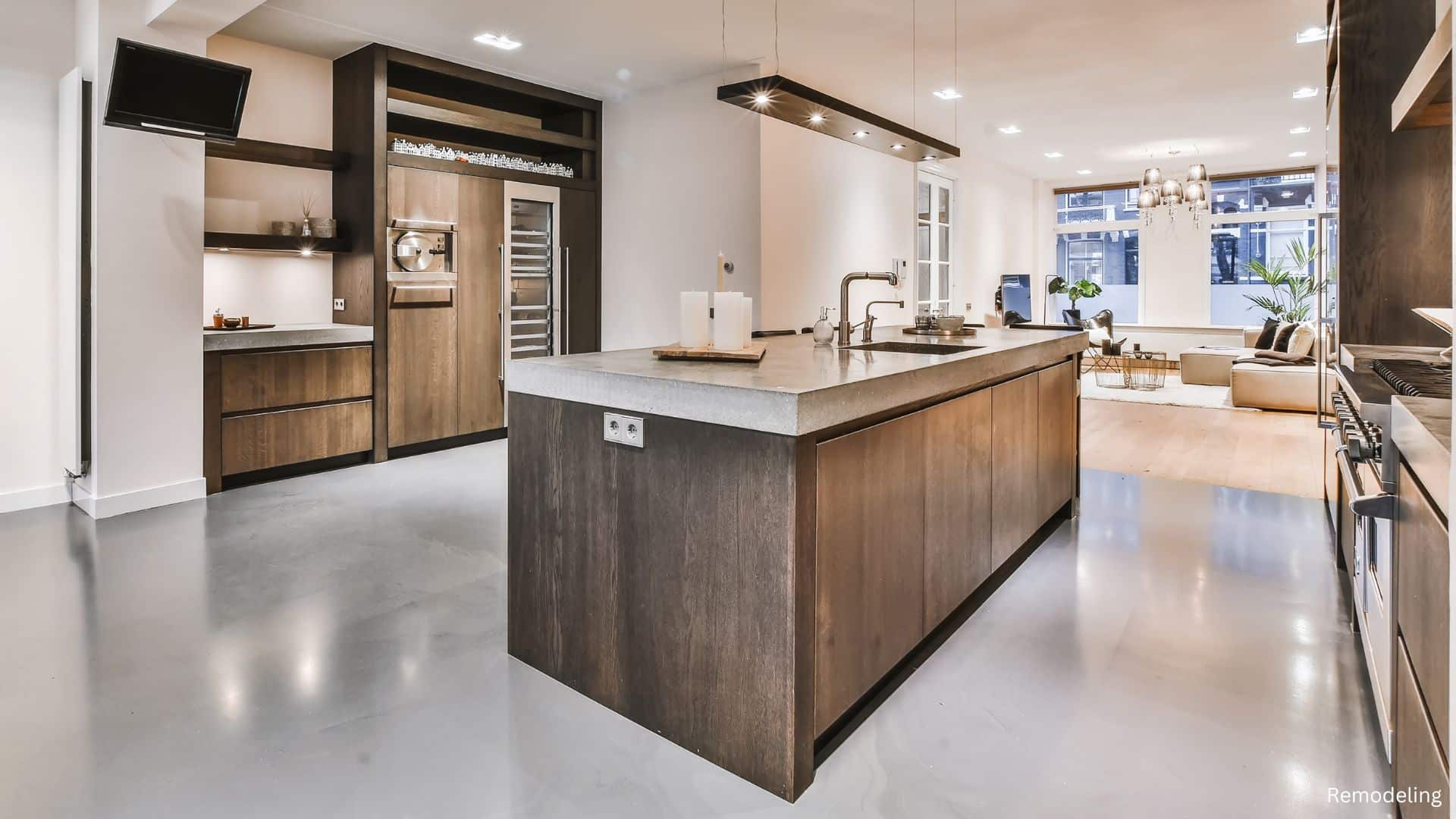
Remodeling your kitchen takes some good planning and budgeting. You’ll want to look at all the costs—from cabinets and countertops to the work involved and the appliances you choose. Whether you’re going for a simple refresh or a full luxury makeover, it helps to know where to splurge and where to save. With a clear budget, a prioritized list of features, and a bit of flexibility for the unexpected, your kitchen remodel will not only enhance your home’s value but also bring lasting enjoyment for years to come.
Related posts:
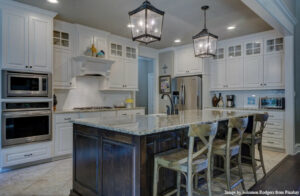 2021 Kitchen Trends: Everything That You Must Know
2021 Kitchen Trends: Everything That You Must Know
 The Most Stylish White Kitchen Faucet Ideas For A Headturning Space
The Most Stylish White Kitchen Faucet Ideas For A Headturning Space
 How to Remove Kitchen Sink Drain?
How to Remove Kitchen Sink Drain?
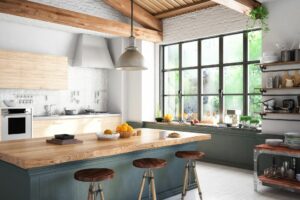 Artistic Kitchen Design & Remodeling: Incorporating Creativity into Your Kitchen
Artistic Kitchen Design & Remodeling: Incorporating Creativity into Your Kitchen
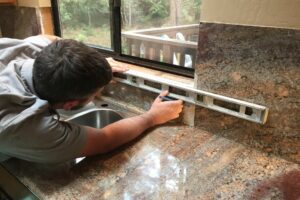 Kitchen Bar Ideas for Small Spaces: Maximize Style and Functionality
Kitchen Bar Ideas for Small Spaces: Maximize Style and Functionality
